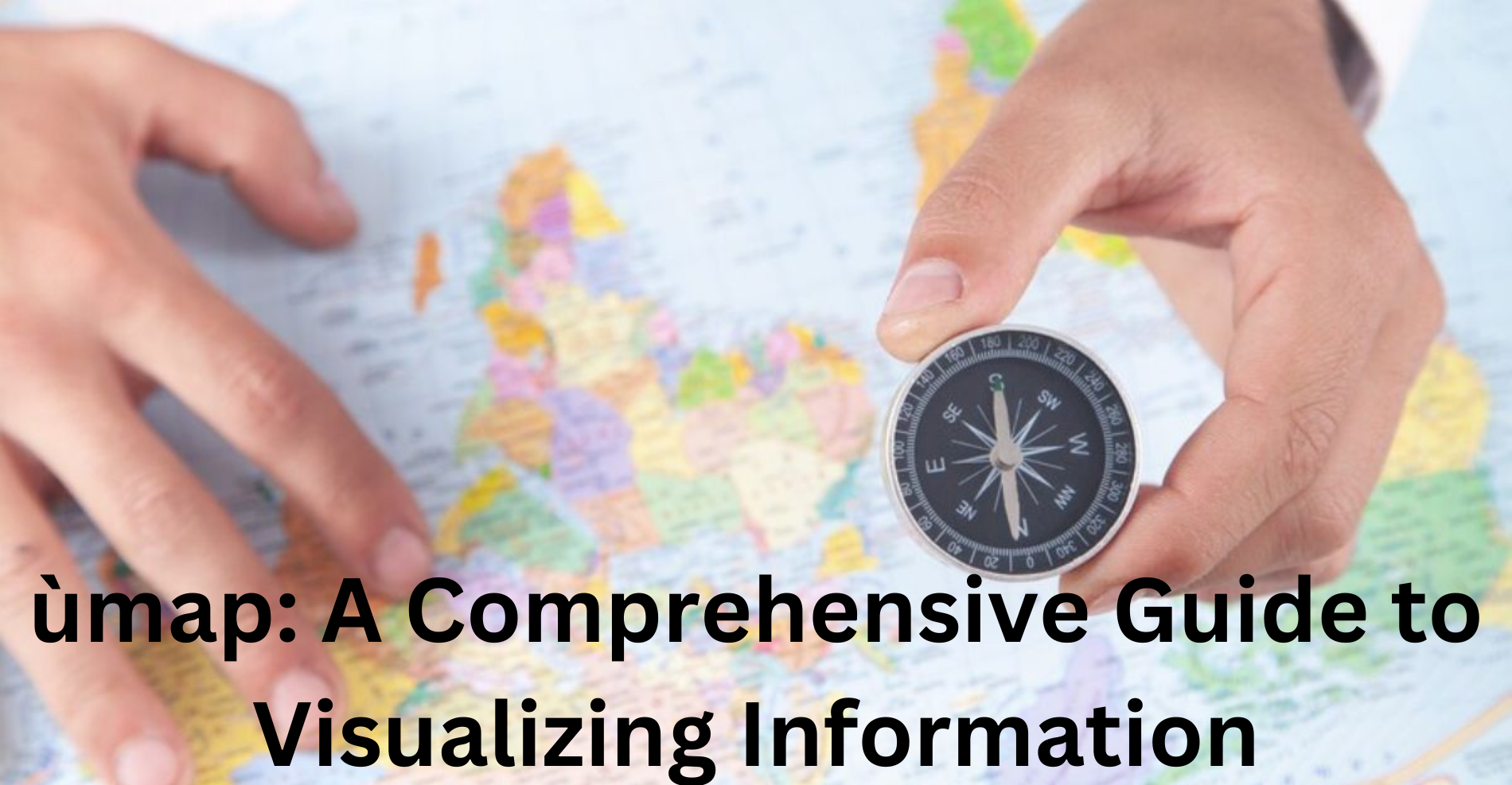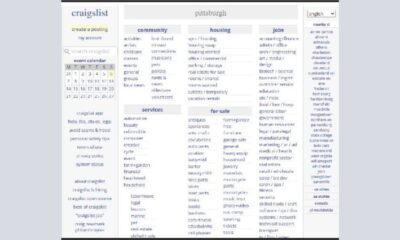General
Chopsticks

Chopsticks: A Cultural Art in Every Bite
Chopsticks, with their origins deeply rooted in ancient China, have transcended their primary purpose as eating utensils to become cultural icons worldwide. From traditional wooden designs to modern innovations, play a significant role in culinary practices and social customs.
Wooden Chopsticks
Wooden chopsticks, the most traditional and widely used, embody the essence of classic craftsmanship. Their natural texture and feel contribute to the authentic dining experience.
Plastic Chopsticks
Lightweight and disposable, plastic offer convenience in today’s fast-paced world. However, their environmental impact raises concerns about sustainability.
Metal Chopsticks
Metal , often associated with Korean and Vietnamese cuisines, provide durability and a sleek, modern appearance. They are favored by those seeking a long-lasting option.
Basic Grip
Mastering the basic grip is essential for chopstick proficiency. The pinch-and-hold technique is the foundation for more advanced maneuvers.
Advanced Techniques
From picking up delicate pieces to separating food effortlessly, advanced techniques showcase the versatility of . Practice refines these skills, turning dining into an art.
Chopsticks Etiquette
Cultural Variations
Chopstick etiquette varies across cultures. Understanding these nuances enhances the dining experience and shows respect for traditions.
Dos and Don’ts
Avoiding certain behaviors, such as pointing with or sticking them upright in food, is crucial for cultural sensitivity and polite dining.
Benefits
Using engages fine motor skills and can contribute to better digestion. They also encourage mindful eating, promoting a healthier relationship with food.
Potential Drawbacks
While chopsticks offer numerous benefits, improper use may lead to discomfort or hand fatigue. Moderation and awareness are key.
The Problem with Disposable Chopsticks
The widespread use of disposable contributes to deforestation and environmental pollution. Exploring sustainable alternatives becomes imperative.
Sustainable Alternatives
From reusable to innovative materials, adopting eco-friendly options helps mitigate the environmental
impact of chopstick production.
Traditional Craftsmanship
Masters o fmaking employ traditional techniques, creating exquisite pieces that reflect cultural heritage and craftsmanship.
Modern Innovations
In the contemporary era, technological advancements contribute to the mass production of chopsticks, meeting global demand while preserving cultural authenticity.
References in Literature and Movies
Chopsticks often make appearances in literature and movies, symbolizing various themes such as connection, precision, and cultural identity.
Symbolism in Art
Artists incorporate into their works, using them as symbols to convey messages about tradition, globalization, and the fusion of cultures.
Adoption in Western Countries
As global cuisine gains popularity, the use of chopsticks extends beyond Asian communities, becoming a part of mainstream Western dining practices.
Fusion Cuisine Trends
The fusion of culinary traditions has led to innovative dishes that seamlessly blend different cultural elements, with as a unifying factor.
Cultural Challenges
As cultures evolve, challenges arise in preserving traditional practices. Adapting while respecting cultural roots is essential for the continued relevance of chopsticks.
Changes Over Time
The design and use of chopsticks have evolved over centuries, adapting to societal changes and technological advancements without losing their cultural significance.
Technological Advancements
Technology may shape the future of , with innovations like smart chopsticks that monitor nutritional intake or provide dining etiquette tips.
Cultural Preservation
Balancing modernization with cultural preservation ensures that remain not only functional tools but also symbols of heritage for generations to come.
Upcycling Used Chopsticks
Repurposing used into creative DIY projects not only reduces waste but also transforms them into unique decorative items.
Creative Projects
From wall art to plant markers, the possibilities for creative chopstick projects are endless, allowing individuals to express their creativity and contribute to sustainability.
Iconic Dishes Best Enjoyed with Chopsticks
Certain dishes are elevated when enjoyed with , enhancing the culinary experience and adding an extra layer of cultural authenticity.
Culinary Experiences
Exploring different cuisines that traditionally use opens up new culinary horizons, providing a sensory journey through diverse flavors and textures.
Collectibles and Memorabilia
Chopsticks with unique designs and cultural significance make for memorable souvenirs, allowing travelers to take a piece of their culinary adventures home.
Unique Designs
From traditional patterns to modern art collaborations, the variety of designs available makes them not just tools for dining but also expressions of personal style.
Conclusion
In this journey through the world of chopsticks, we’ve explored their cultural roots, various types, usage techniques, and impact on health and the environment. As we embrace technological advancements and adapt to cultural changes, remain a timeless symbol connecting us to our heritage and the global community.
FAQs (Frequently Asked Questions)
Are chopsticks only used in Asian countries?
Chopsticks are traditionally associated with Asian countries, but their use has become global, with many people in Western countries incorporating them into their dining practices.
Can using improve fine motor skills?
Yes, using chopsticks requires precision and control, contributing to the development of fine motor skills.
What are some sustainable alternatives to disposable ?
Reusable chopsticks made from bamboo or stainless steel are eco-friendly alternatives, reducing the environmental impact of disposable options.
Do different cultures have specific etiquette?
Yes, chopstick etiquette varies among different cultures. It’s essential to be aware of these cultural nuances to show respect while dining.
How can I repurpose used for DIY projects?
Used can be transformed into various creative projects, such as wall art, plant markers, and more. Get inspired by exploring different DIY ideas online.
Food
2048 Cupcakes

Does your sweet craving coincide with your love of puzzle games? If that’s the case, you’re going to love 2048 Cupcakes! This charming update on the original 2048 game swaps out the digits for cupcakes, making it both aesthetically pleasing and tough. Starting with the fundamentals and on to more complex techniques, this article will cover everything you need to understand about 2048 Cupcakes. Alright, let’s begin!
What is 2048 Cupcakes?
Origins of the Game
Gabriele Cirulli developed the original 2048 game in 2014, and 2048 Cupcakes is a spinoff of that game. It didn’t take long for the original game to become a hit because of how easy it was to pick up and play. This success served as inspiration for the makers of 2048 Cupcakes, who added a whimsical touch by substituting cupcake graphics for the numbers.
Basic Gameplay Mechanics
A sliding puzzle game, 2048 Cupcakes is an exact replica of the original. You can only attain the ultimate cupcake by combining cupcakes of the same kind to make new, higher-level cupcakes. The game is played on a 4×4 grid, and with each move, a fresh cupcake emerges in an empty position on the grid.
How to Play 2048 Cupcakes
Game Controls and Interface
The rules of 2048 Cupcakes are simple. You may guide the cupcakes in the appropriate direction by swiping on a mobile device or using the arrow keys on a keyboard. Two cupcakes of the same level will combine into one when they hit each other. When all viable movements have been exhausted, the game terminates
Objective of the Game
The main goal is to merge lower-level cupcakes to achieve the maximum possible cupcake level. It may seem easy, but you’ll need to plan your movements intelligently to prevent the grid becoming filled up too soon.
Cupcake Levels and Their Visual Appeal
Description of Different Cupcakes
Different kinds of cupcakes, each more aesthetically pleasing than the last, symbolize each level in 2048 Cupcakes. You may start with a basic vanilla cupcake and work your way up to more complex, icing-laden treats.
Evolution of Cupcakes in the Game
Cupcakes take on a more ornate and vibrant style as you go through the game. An aesthetically appealing visual motivation to continue playing and unlocking higher levels is the more detailed and enticing cupcake.
Tips and Strategies for Success
Basic Tips for Beginners
Plan Ahead: Don’t make random moves. Think about where each cupcake will land.
Focus on Corners: Try to keep your highest-level cupcake in a corner to build around it.
Avoid Filling the Grid: Keep spaces open for new cupcakes to appear.
Advanced Strategies for High Scores
Build Chains: Create opportunities to merge multiple cupcakes in one move.
Control the Grid: Manage the appearance of new cupcakes by controlling empty spaces.
Practice Patience: Sometimes the best move is to wait and plan your next series of moves.
Why 2048 Cupcakes is Addictive
The Psychology Behind the Game
The game 2048 Cupcake takes use of the fact that people like games that include pattern recognition and goals. Achieving new levels and combining cupcakes gives gamers a feeling of success, which keeps them coming back for more.
Comparison with Original 2048 Game
Although 2048 is already a very addicting game, 2048 Cupcake takes it to the next level with its eye-catching visuals. Players are motivated to keep playing by the vibrant cupcakes and the anticipation of seeing the next tasty creation.
Benefits of Playing 2048 Cupcakes
Cognitive Skills Enhancement
A player’s problem-solving, strategic-thinking, and spatial-awareness abilities may all be honed by playing 2048 Cupcake. Playing this game will force you to think strategically and plan ahead.
Stress Relief and Relaxation
Twenty48 Cupcakes is a great way for a lot of people to unwind and have fun. A terrific way to relax at the end of a hard day, thanks to its easy-to-understand gameplay and beautiful graphics.
Challenges in 2048 Cupcakes
Common Mistakes and How to Avoid Them
Overcrowding the Grid: Always keep at least one empty space open.
Random Moves: Each move should be part of a larger strategy.
Ignoring Corners: Use corners to your advantage to control the board.
The Most Difficult Cupcake Combinations
It becomes a lot tougher as you go through the stages. Avoiding circumstances when no further movements are feasible and controlling the restricted area are the most tough parts.
2048 Cupcakes for Different Age Groups
Why Kids Love It
The bright colors and whimsical pattern of the cupcakes immediately catch the eye of children. This game is perfect for younger players who want a good challenge since it is simple to learn yet tough to master.
Appeal to Adults and Seniors
Due to the game’s strategic intricacy and mental challenge, 2048 Cupcakes is well-liked by adults and seniors. Keeping one’s intellect active and bright is a wonderful benefit.
2048 Cupcakes in the Classroom
Educational Value
A entertaining and engaging teaching tool, 2048 Cupcakes may be used by teachers. The vibrant visuals captivate pupils and aid in the development of their critical thinking and problem-solving abilities.
How Teachers Can Incorporate It into Learning
In the classroom, 2048 Cupcakes may be a lighthearted and engaging activity. Students are captivated by the vibrant pictures, which aid in the development of critical thinking and problem-solving abilities.
2048 Cupcakes as a Social Activity
Playing with Friends and Family
A 2048 Cupcakes party is a fun way to spend quality time with loved ones. Try to rack up the highest score, or take turns climbing the cupcake ladder.
Online Communities and Competitions
Athletes may find a wealth of information, including high scores, methods, and groups, on the internet. The gaming experience and the knowledge gained from participating in these groups may be greatly enhanced.
Alternatives to 2048 Cupcakes
Other 2048 Variants
Countless other 2048 variations are at your fingertips, like 2048 Pokémon, 2048 Tetris, and 2048 Animals. You may enjoy a fresh take on the traditional gameplay with each variety.
Similar Puzzle Games
Other puzzle games that you may like include Threes!, Candy Crush, and Merge Dragons if you like 2048 Cupcakes. Playing these games is quite addicting and has similar principles.
Future of 2048 Cupcakes
Potential Updates and Features
Twenty48 Cupcake fans are constantly hoping for more content. Possible additions include more elaborate cupcake patterns, bigger grids, and possibly multiplayer options.
Fan Predictions and Wishes
Many players express their hopes for upcoming updates and speculate on what features they would want to see included. Adding more difficulties and themed cupcake sets are two frequent suggestions.
Where to Play 2048 Cupcakes
Available Platforms (PC, Mobile, Tablet)
2048 Cupcake is playable on a wide variety of devices, from desktop computers to mobile phones and tablets. Thanks to this, you may play whenever and wherever you choose.
Best Websites and Apps
The official 2048 Cupcake website, app shops for iOS and Android, and other online gaming portals are among the finest venues to play the game.
Conclusion
With a sugary spin on the original 2048 gameplay, 2048 Cupcake is an entertaining and engaging puzzle game. Players of all ages love it for its visually attractive graphics, deep strategic gameplay, and cognitive advantages. If you’re in the mood for a difficult brain exercise or a delightful way to kill time, 2048 Cupcake is the game for you.
FAQs
What is the highest cupcake level in 2048 Cupcakes?
Getting to the Rainbow Cupcake, the highest level in 2048 Cupcake, is no easy feat.
Can you play 2048 Cupcakes offline?
After installing the software on your mobile device, you will be able to play 2048 Cupcake without an internet connection.
Are there any cheats or hacks for 2048 Cupcakes?
You can find hacks and cheats online, but utilizing them might make the game less entertaining and less challenging.
How does 2048 Cupcakes compare to the original 2048 game?
Players who like bright visuals will find 2048 Cupcake an attractive update to the classic 2048 game.
Is 2048 Cupcakes suitable for children?
I believe 2048 Cupcake is a great game for kids since it’s a fun opportunity for them to practice strategy and solve problems.
Education
ùmap: A Comprehensive Guide to Visualizing Information

What is ÙMap?
The essence of a ÙMap is a graphical depiction of information, ideas, or procedures. With nodes standing in for various components and their connections, it employs a hierarchical framework to arrange data. This style is highly beneficial in many disciplines, including education, project management, and strategic planning, since it facilitates easy navigation and comprehension of complicated subjects.
Importance of ÙMap
Maps’ value is in the way they simplify data and make it easier to understand. In order to improve understanding and decision-making, ÙMaps display data in a visually attractive and organized way. Maps provide a plethora of advantages, whether they are utilized for ideation sessions, presentations, or strategic research.
How to Create a ÙMap
An easy way to start making a ÙMap is to figure out what the major subject or theme is. Users are then able to build upon the main idea by adding branches and sub-branches. To make it easier to create maps, there are a number of software applications and internet platforms that include features like configurable templates and drag-and-drop capability.
Key Components of a ÙMap
Usually, a few essential parts make up a well-designed ̙Map, such as:
Theme or primary emphasis
The branches stand for the main concepts or groups.
Branches that go into further depth on certain subjects
Relationships between related parts
Visual aids that improve legibility, including pictures, symbols, and colors
Examples of ÙMaps
Here are a few examples to show how versatile ̓maps may be:
Project Management: Team members can better understand the project’s scope and interdependencies with the use of a ̓map that outlines project goals, tasks, and due dates.
Education:Instructors may arrange course resources, lesson plans, and learning goals using ÙMaps, giving students an easy way to find their way around in class.
Strategic Planning: Market trends, competitive landscapes, and growth possibilities may be better understood by business executives using ̙maps, which can then be used to generate strategic initiatives.
Common Mistakes to Avoid When Creating a ÙMap
Although ̙Maps provide several advantages, it is important to steer clear of typical mistakes:
When there is an excess of data on a single map, it can be confusing and difficult to understand.
Misunderstandings about the interrelationships of various components could arise from a lack of a defined hierarchy.
It is crucial to pay attention to the visual appeal of a map since bad design decisions might reduce its usefulness.
Best Practices for Designing an Effective ÙMap
Take into account these excellent techniques to make a map that makes a big splash:
Get the ball rolling with a well-defined goal and framework.
When labeling nodes and branches, make sure they are brief and informative.
Make things more organized and easier to understand by using color coding and other visual signals.
Keep the ̓map up-to-date by reviewing it often and making any necessary modifications or additions.
Tools for Creating ÙMaps
There are several software programs and platforms that may be used to create ÓMaps, such as:
Brainstorm, XMind, Coggle, Lucidchart, and FreeMind
To accommodate a wide variety of requirements and tastes, these tools provide a wide array of features and functions.
Using ÙMaps for Planning and Decision Making
Maps aren’t just useful for organizing data; they may also aid in planning and decision making. Users may more confidently and efficiently establish plans, recognize opportunities, and evaluate risks by visualizing links and dependencies.
Benefits of Digital ÙMaps
- Although there is a use for traditional paper-based ÙMaps, digital ÙMaps have several benefits, such as:Accessibility: Any location with an internet connection may see and make changes to digital maps.
Teamwork and the exchange of ideas are both enhanced by the ability for several individuals to work together in real-time on an online platform.
Connectivity: Other software tools and platforms may be seamlessly integrated with digital ÙMaps, improving their overall functionality.
Future Trends in Mapping
The discipline of ̙mapping will also undergo continuous evolution in tandem with technology. Keep an eye on these new trends:
Artificial Intelligence: Algorithms driven by AI might provide fresh perspectives and skills for creating and evaluating ̙maps.
Augmented Reality (AR) technology has the potential to transform the way people engage with geographical data by allowing for more immersive and interactive mapping experiences.
Data Visualization: Improvements in methods for displaying data visually might result in ÓMap presentations that are more adaptable and personalized, which would increase user involvement and comprehension.
Conclusion
Maps are helpful for arranging data, making things more clear, and making decisions easier. Maps have several uses and may be made using many software programs and platforms; they are useful in project management, teaching, and planning for the future. To reach their aims and objectives, users may get the most out of ̓Maps by adhering to best practices and keeping themselves updated about new trends.
FAQ’s
What is the difference between a ÙMap and a traditional outline?
Although both help to arrange data, conventional outlines are usually text-based and linear, whereas maps provide a visual depiction with linked nodes.
Can ÙMaps be used for personal organization and goal setting?
Sure thing! In both their personal and professional lives, a lot of people utilize ̓Maps for task management, progress tracking, and goal setting.
Are there any free options for creating ÙMaps?
Users with different requirements and budgets can choose an online platform that suits them, because many of them provide free versions with limited functionality.
How can I learn more about advanced ÙMapping techniques?
To learn more about ̙Mapping and information visualization, you might want to look at online tutorials, seminars, and community forums.
What are some creative ways to use ÙMaps in marketing and content creation?
Among other uses, marketers may utilize ̓Maps to create content calendars, plot customer journeys, and generate campaign ideas.
Food
Fitspresso Analysis: Revolutionizing Coffee Insights and Customer Experience

Understanding Fitspresso Data
Fitspresso Analysis collects a number of metrics related to coffee consumption and physical activity. Metrics like caffeine use, sleep patterns, heart rate variability, and espresso shots drank are part of this.
Wearable fitness trackers, such as Fitbit, record the user’s physiological reactions to their daily activities and can provide the data used in Fitspresso Analysis. Also, by documenting brewing settings and consumption habits, contemporary espresso machines with data monitoring capabilities add to the information
Benefits of Fitspresso Analysis
There are several benefits to using Fitspresso Analysis. A better coffee experience for everyone may be achieved when companies take the time to study consumer habits and use that information to improve their products.
In addition, coffee shops may tailor their interactions with customers using Fitspresso Analysis. Cafes may increase customer happiness and loyalty by catering to customers’ caffeine sensitivity, which impacts their ability to sleep and energy levels.
Tools for Conducting Fitspresso Analysis
Fitspresso analysis requires certain instruments and machinery for its execution. Fitness and coffee consumption data is mostly derived from Fitbit trackers, which record important parameters all day long.
Fitspresso Analysis relies heavily on both wearable devices and espresso machines that have data tracking capabilities built in. Brewing data like water temperature, pressure, and extraction time are recorded by this equipment, which tells us a lot about the coffee’s flavor and how it was prepared.
Challenges in Fitspresso Analysis
Fitspresso analysis has its share of problems, despite the fact that it could be useful. Data dependability and accuracy are two of the main issues. The data obtained may not be accurate due to wearable technology’s limitations and individual variability in caffeine reactions.
Fitspresso Analysis also has serious privacy concerns. In order to keep users’ confidence and stay in accordance with privacy requirements, it is crucial to gain their consent and implement suitable data protection procedures while dealing with sensitive health and lifestyle data.
Case Studies of Successful Fitspresso Implementations
In order to boost consumer involvement and spur innovation, a number of companies have used Fitspresso analysis. Café X, a well-known coffee shop chain, uses Fitspresso data to make individualized coffee suggestions for clients according to their fitness objectives and tastes, thereby strengthening their relationship with the consumers.
Coffee Roastery Y also uses Fitspresso Analy’sis to enhance the roasting process. The roastery improves the consistency and taste refinement of its coffee offerings by linking brewing parameters with sensory assessments and customer input. This leads to higher customer satisfaction and brand loyalty.
Future Trends in Fitspresso Analysis
Fitspresso Analy’sis has great potential for the future. The combination of Fitspresso data with predictive analytics holds great potential to further disrupt the coffee market, thanks to developments in AI and ML. Staying ahead of the curve and delivering unique value to consumers is possible when firms foresee consumer trends and optimize product development and marketing tactics.
Fitspresso Analy’sis is also well-positioned to get into the home coffee brewing market, which is currently untapped by the company. Consumers’ growing interest in health and technology, along with their desire for individualized coffee experiences, will propel the use of Fitspresso-enabled home espresso machines and smartphone apps.
Conclusion
Fitspresso Analysis is a revolutionary method for deciphering the complex web of connections between coffee intake, physical fitness, and individual health. Through the utilization of data analytics, companies may tap into untapped potential for growth, consumer engagement, and innovation in the cutthroat coffee industry. Fitspresso Analy’sis has the potential to revolutionize coffee culture with each shot as technology keeps getting better.
FAQ’s
What distinguishes Fitspresso Analysis from traditional coffee market research?
By integrating real-time data on coffee consumption and fitness activities, Fitspresso Analy’sis offers a comprehensive perspective on consumers’ lifestyles and preferences. Using real behavior and physiological responses, Fitspresso Analy’sis provides objective insights as opposed to the subjective approaches used in traditional market research, such as focus groups and surveys.
How can businesses address privacy concerns associated with Fitspresso analysis?
Businesses should make data security and transparency their top priorities to address privacy concerns. This involves doing things like following data protection rules like GDPR and CCPA, establishing strong encryption and access restrictions, and getting users’ permission before collecting and analyzing their data.
What are some potential applications of Fitspresso Analysis beyond the coffee industry?
Although the coffee business is the primary user of Fitspresso Analy’sis, the concepts and methodology it employs have broad applicability, including the health and wellness, food and beverage, and exercise industries. Data analytics modeled after Fitspresso, for instance, may improve product development across a number of consumer goods sectors as well as guide the creation of individualized dietary regimens and exercise programs.
How can individuals benefit from Fitspresso analysis in their daily lives?
Fitspresso Analy’sis can help people understand their caffeine sensitivity, coffee intake patterns, and fitness objectives. Individuals may enhance their health, productivity, and energy levels by monitoring their Fitspresso statistics and making educated decisions regarding their coffee use.
Is Fitspresso Analysis accessible to small businesses and coffee enthusiasts?
The widespread availability of reasonably priced data tracking technologies and wearable fitness equipment is making Fitspresso Analy’sis more accessible to small companies and coffee consumers. Fitspresso Analy’sis can help even the most inexperienced coffee drinker improve their brewing methods and get more flavor out of their beans with the correct knowledge and equipment.
-

 Business9 months ago
Business9 months agoCraigslist Pittsburgh: A Local Marketplace for Goods, Services, and Community Engagement
-

 Technology9 months ago
Technology9 months agoAmazons GPT 55X: A Revolutionary Leap in Artificial Intelligence
-

 Uncategorized9 months ago
Uncategorized9 months agoUnlocking Career Success with 92career: Embracing Adaptability and Lifelong Learning
-

 Technology9 months ago
Technology9 months agoIntroduction to auz100x
-

 General9 months ago
General9 months agochargomez1: Revolutionizing the Digital Sphere
-

 Entertainment9 months ago
Entertainment9 months agoiFunTV: Revolutionizing Your Entertainment Experience
-

 Technology9 months ago
Technology9 months agoExploring the World of InnoCams
-

 Health &Fitness9 months ago
Health &Fitness9 months agoOridzin: Unveiling the Marvels of this Natural Compound
